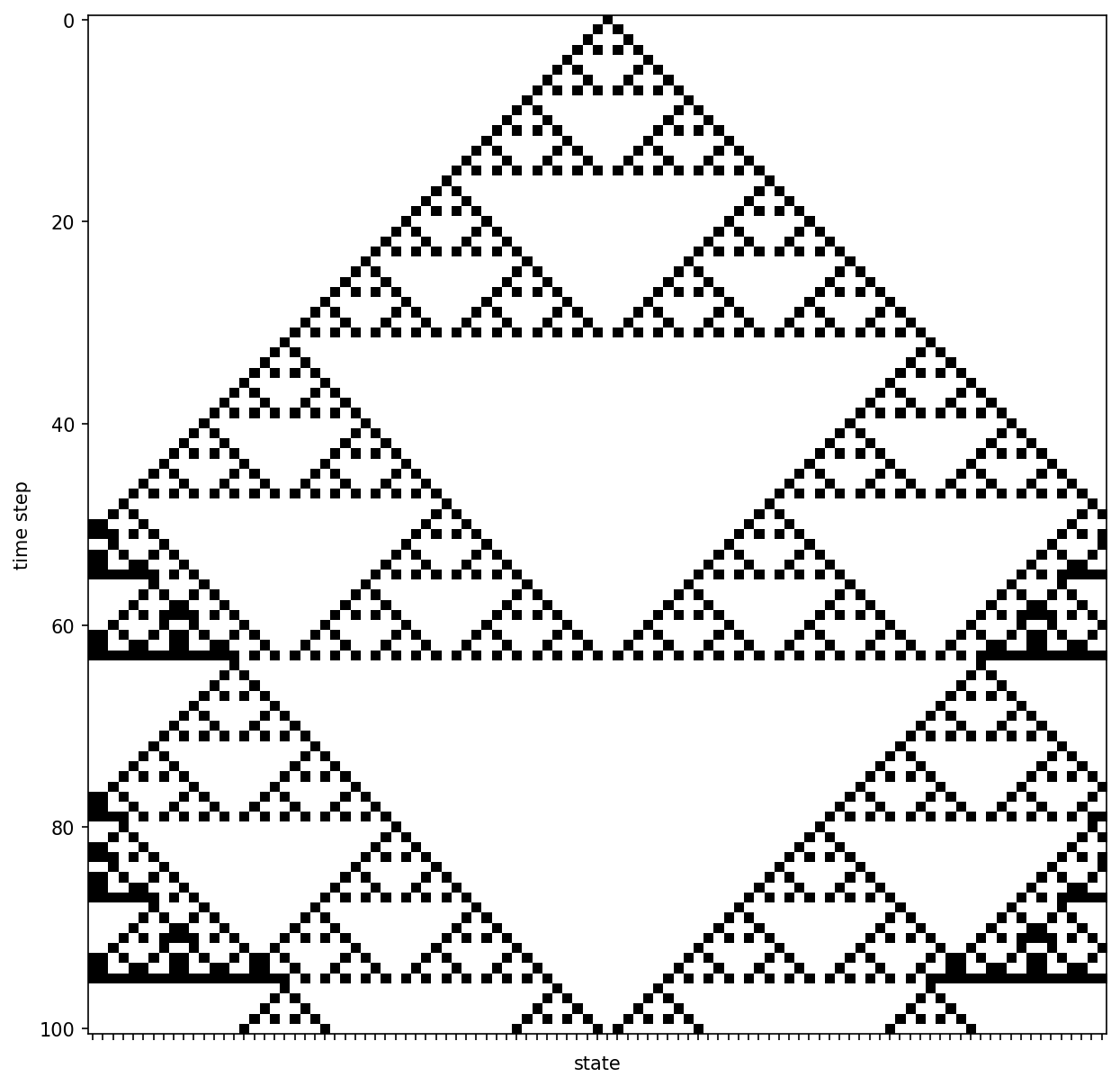03 Cellular automata¶
What are cellular automata?
- boolean network
- spatial pattern of nodes
- local interactions, only nearest neighbors in rules
- all nodes have same rules
\([X0][X1][X2][X3]...\)
Simplest case: 1-dimension¶
- every node has 3 neighbors (left, center, right)
- circular boundary conditions
- example rules
\(000 \rightarrow 0\)
\(001 \rightarrow 1\)
\(010 \rightarrow 0\)
\(011 \rightarrow 1\)
\(100 \rightarrow 1\)
\(101 \rightarrow 0\)
\(110 \rightarrow 1\)
\(111 \rightarrow 0\)
Example
By applying the rules the next time step is calculated. For instance for
\([0][0][0][1][0]\)
\(\downarrow\)
\([0][0][1][0][1]\)
Such simple rules can result in complex patterns.

Time evolution of cellular automaton with 101 states and the rules from above. The code is provided in the examples.
Insights: local interactions can lead to global patterns → Pattern formation
2D automata¶
The neighborhoods can be extended to 2 dimension.
Famous example: Conway’s Game of life
References¶
- Game of Life, Wikipedia; https://en.wikipedia.org/wiki/Conway%27s_Game_of_Life
- A Brief History of Cellular Automata, Palash Sarkar, https://www.cs.ucf.edu/~dcm/Teaching/COT4810-Spring2011/Literature/CellularAutomata.pdf